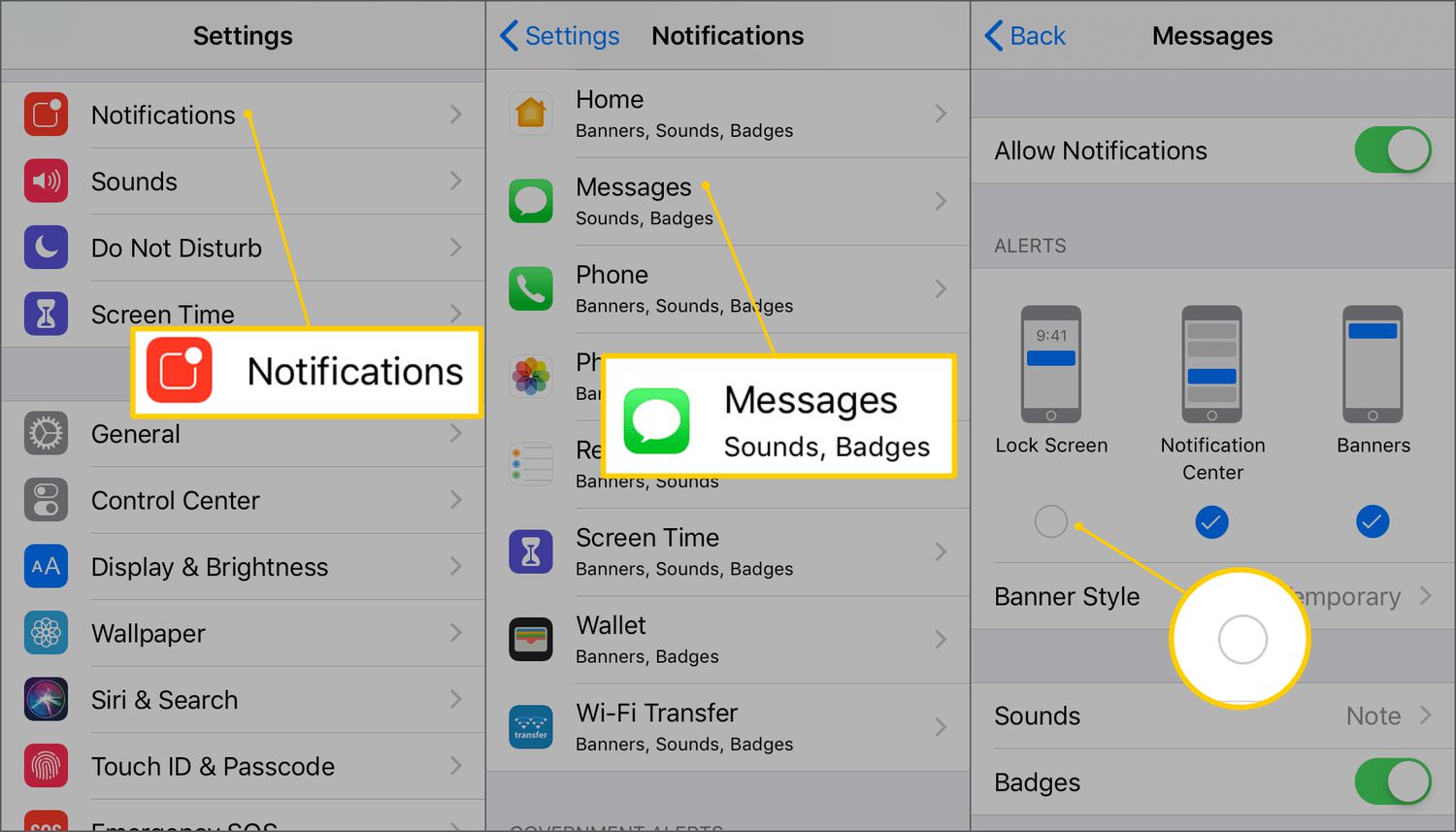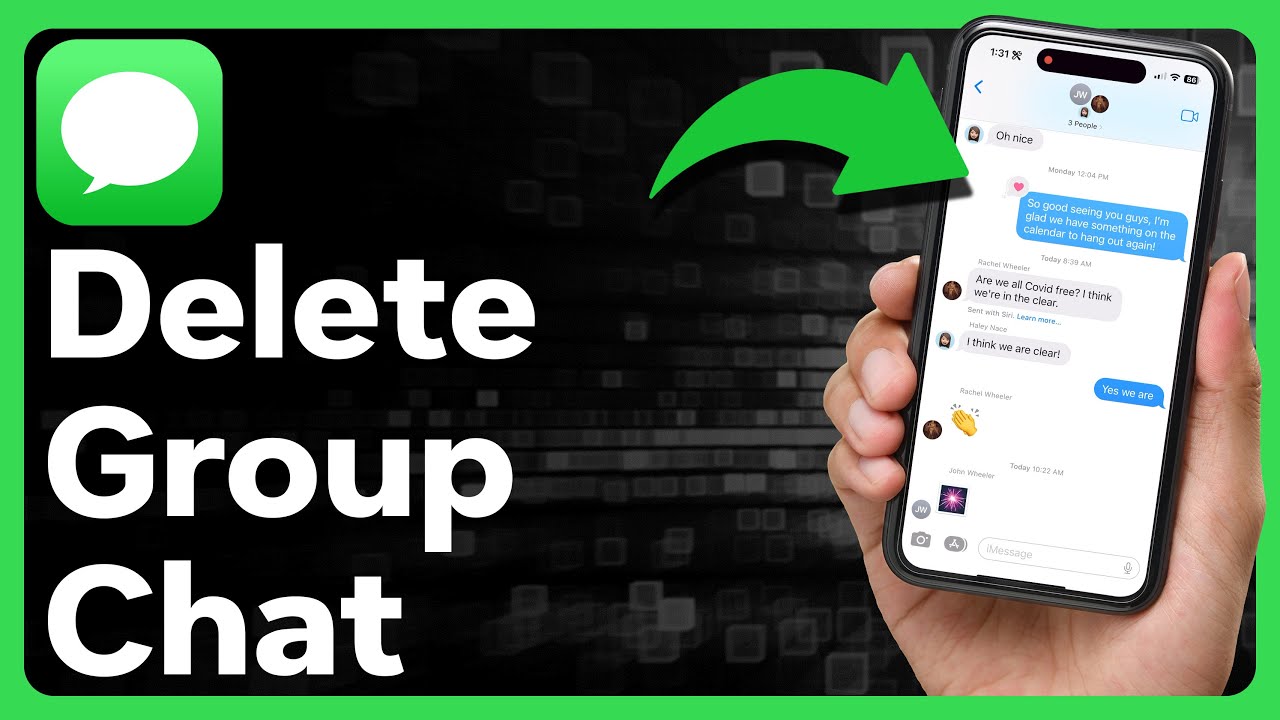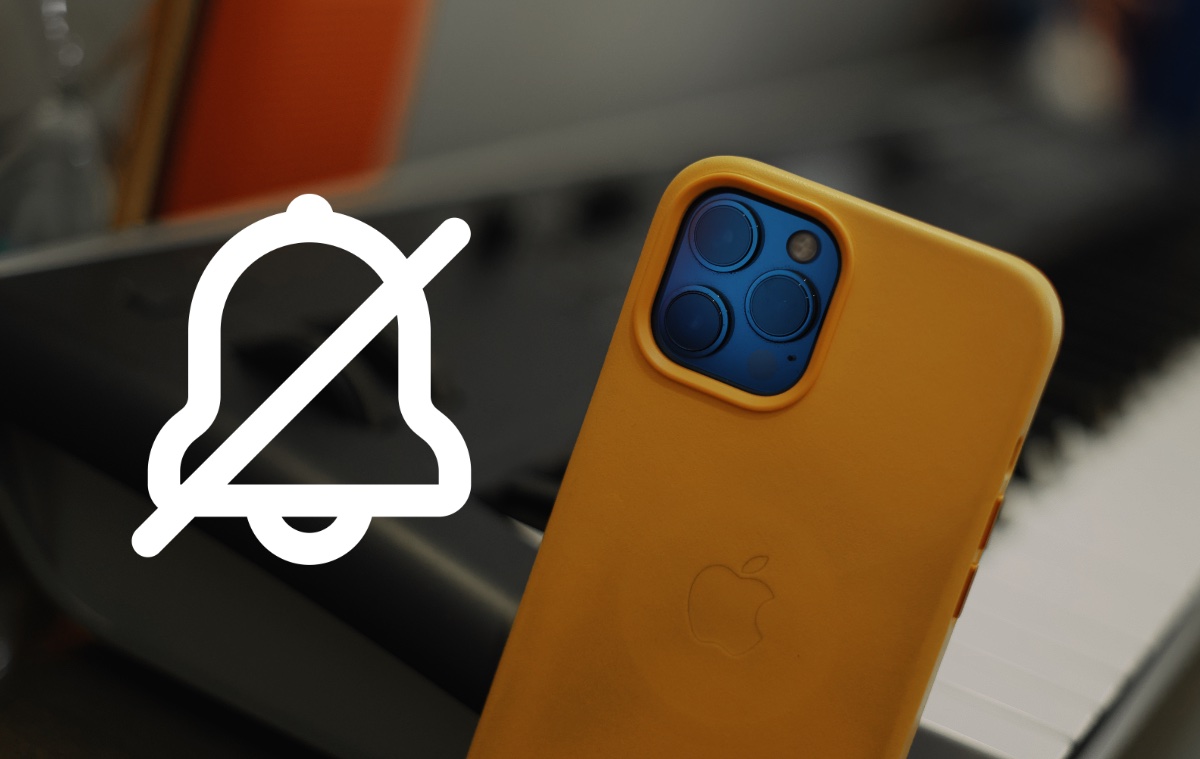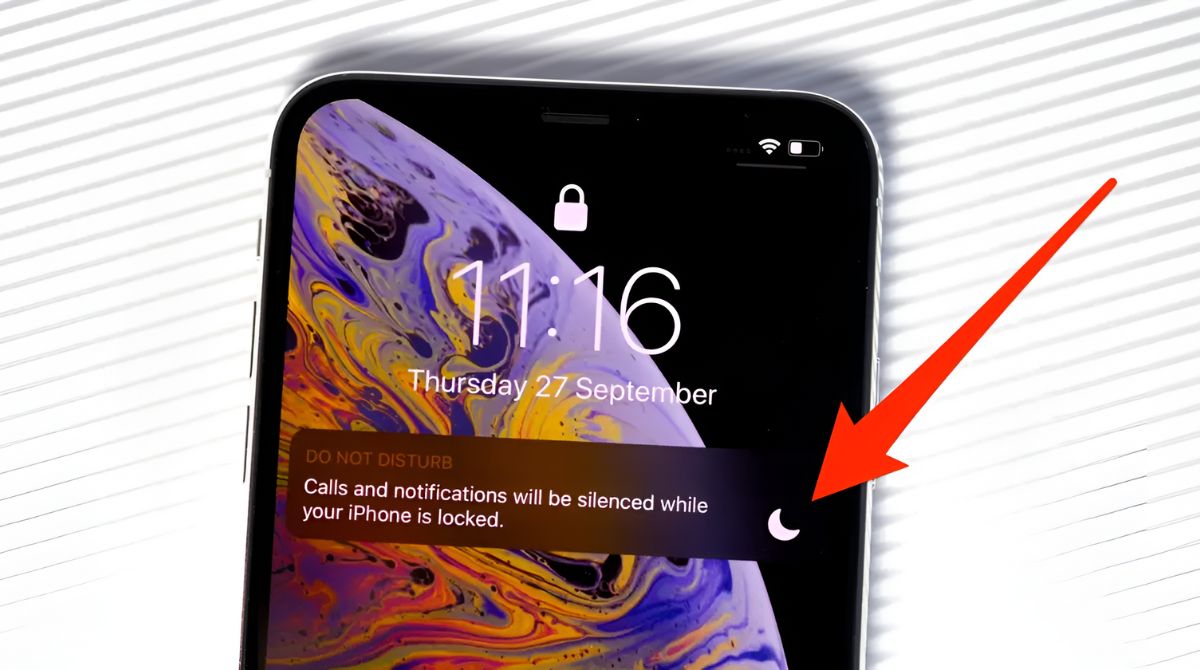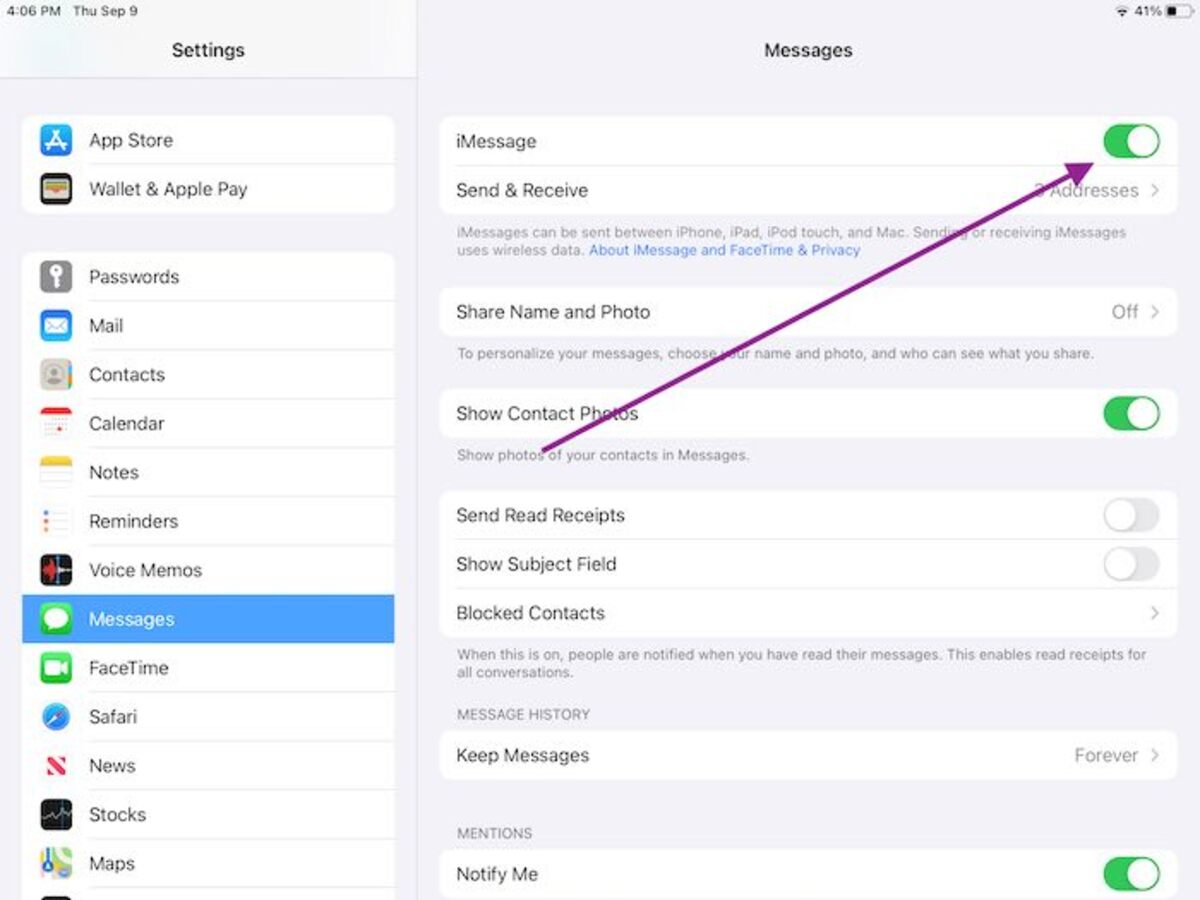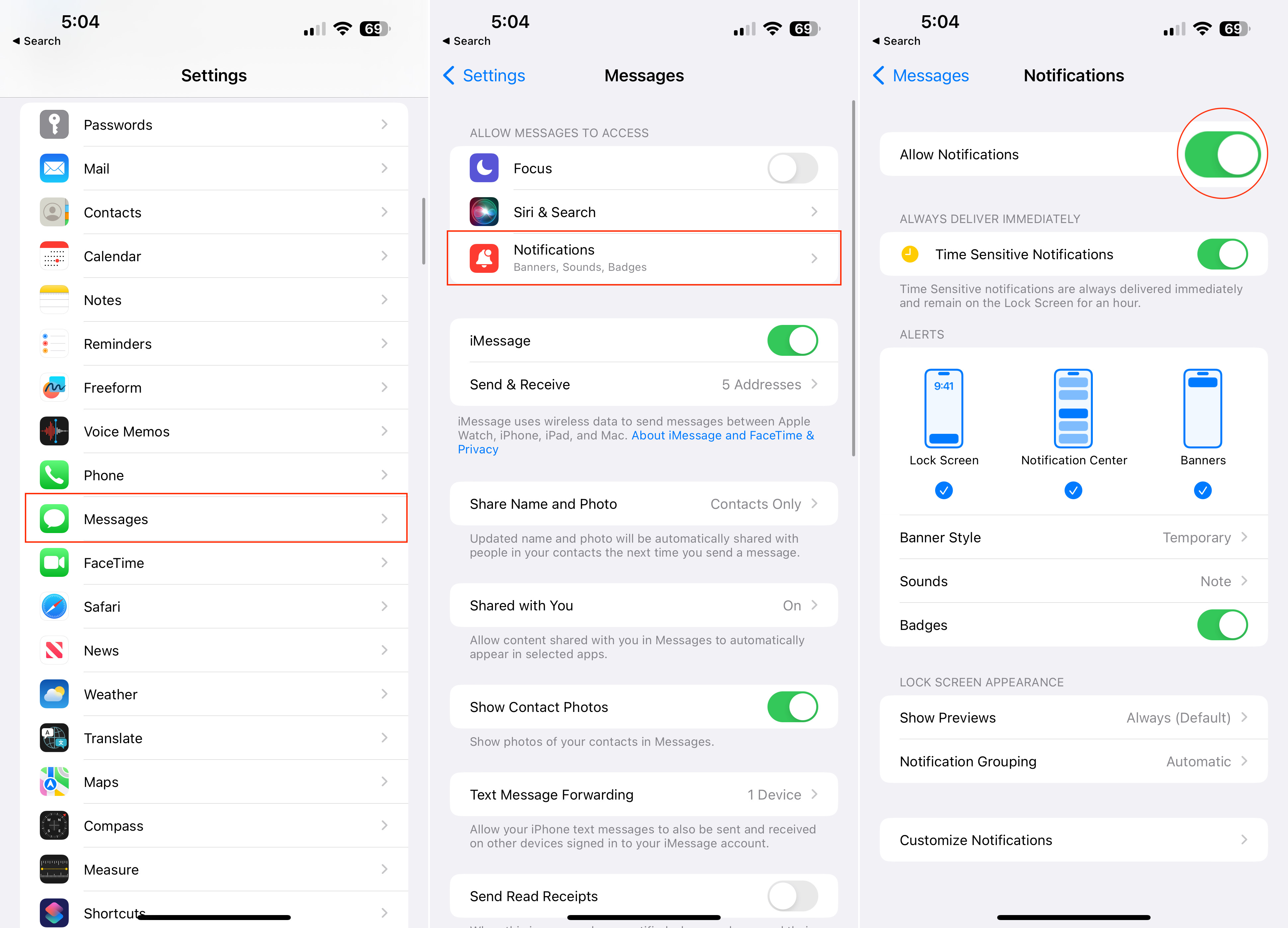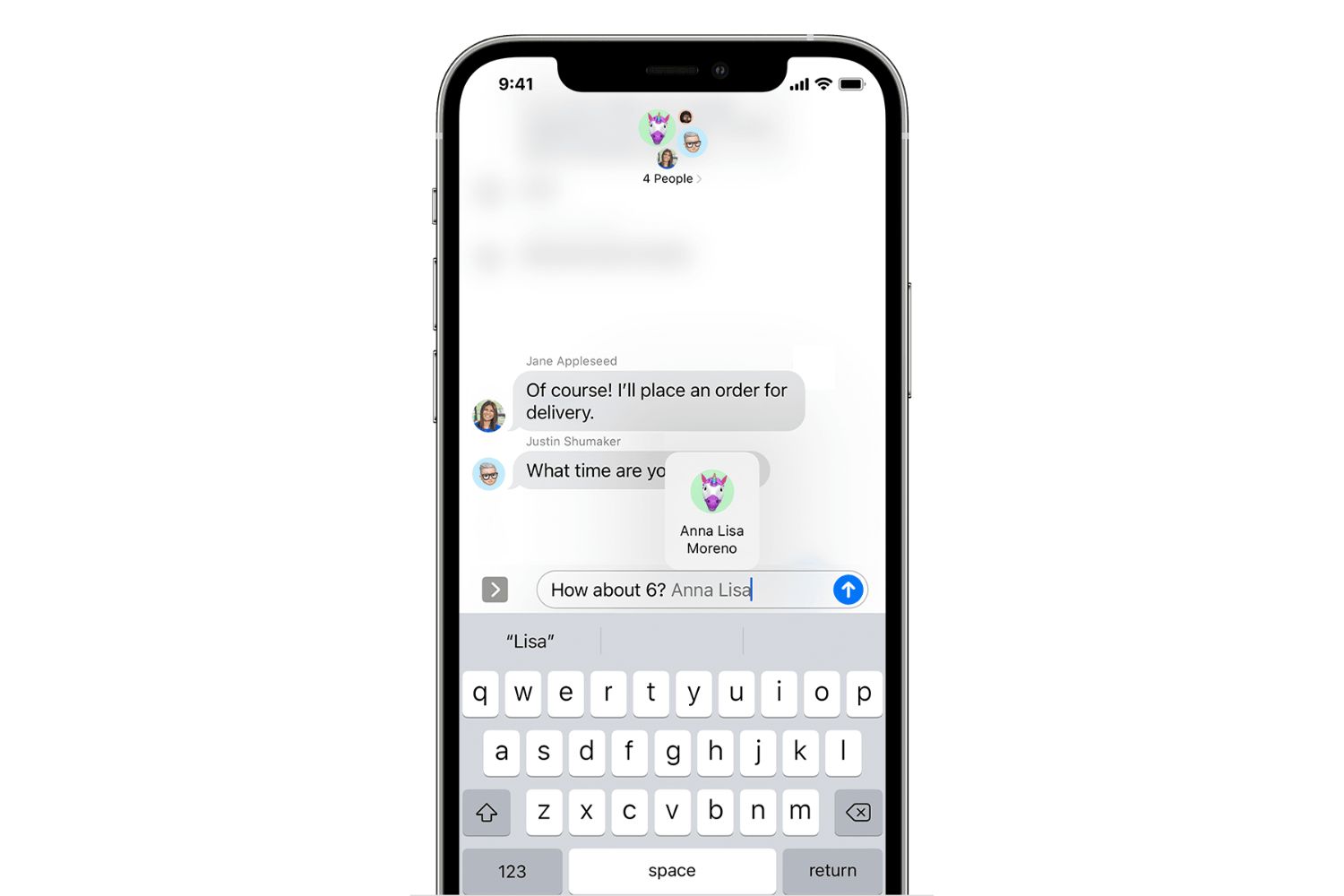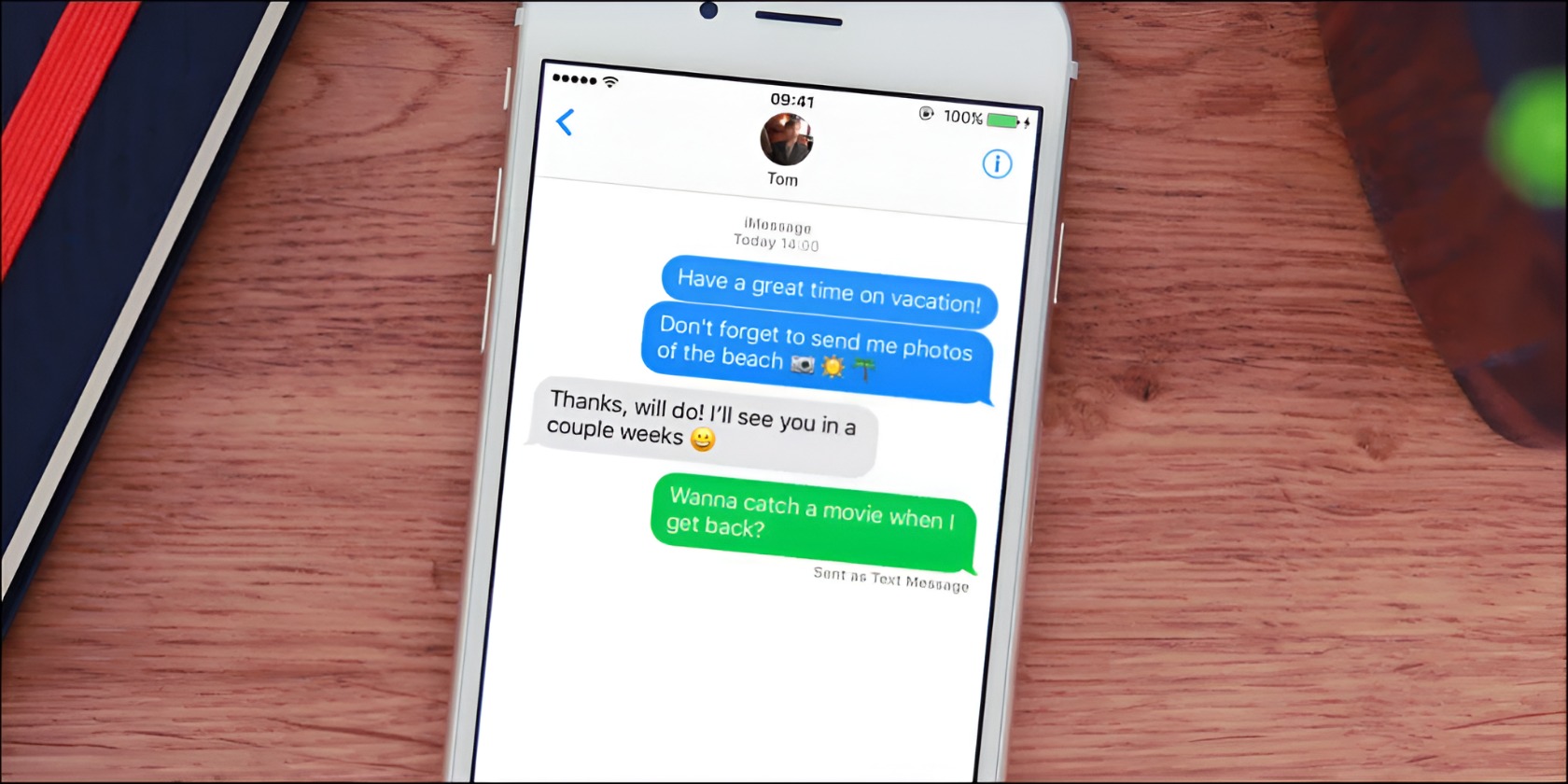Possible Reasons for Not Receiving iMessage Notifications
As an iPhone user, it can be frustrating when you are not receiving notifications for your iMessages. It can cause you to miss important messages, appointments, or even affect your communication with others. Luckily, there are several possible reasons why you might not be getting iMessage notifications, and most of them can be easily resolved. Let’s explore some of the common reasons and how you can troubleshoot the issue:
- Do Not Disturb Mode Enabled: One of the main reasons for not receiving iMessage notifications is having the “Do Not Disturb” mode enabled. This feature silences all notifications, including iMessage alerts. To check if this is the case, swipe up on your iPhone screen to access the Control Center and look for the crescent moon icon. If it is highlighted, tap on it to disable Do Not Disturb mode.
- Notification Settings Turned Off: Another possibility is that your iMessage notification settings might be turned off. To check and adjust them, go to “Settings” on your iPhone, then tap on “Notifications.” Scroll down and find the “Messages” option. Ensure that “Allow Notifications” is enabled and that you have selected the desired alert style.
- Inactive or Weak Wi-Fi or Cellular Connection: iMessage relies on a stable internet connection to deliver notifications. If you are in an area with a weak or no Wi-Fi or cellular signal, it may prevent you from receiving iMessage notifications. Ensure that your internet connection is active and strong, or try switching between Wi-Fi and cellular data to see if it resolves the issue.
- Software Updates Needed: Outdated software can sometimes cause notification issues. Make sure that your iPhone’s operating system is up to date by going to “Settings,” tapping on “General,” and selecting “Software Update.” If an update is available, install it and check if the iMessage notifications start working again.
- Apple ID or iCloud Account Issues: If there are problems with your Apple ID or iCloud account, it can interfere with iMessage notifications. Sign out of your Apple ID and sign back in to refresh the account settings. To do this, go to “Settings,” tap on your name at the top, select “Sign Out,” then sign in again.
- Notifications Disabled for Specific Contacts: It is also possible that the notifications for specific contacts are disabled. Open the Messages app, select a conversation from the contact you are not receiving notifications from, and tap on the “i” icon at the top-right corner. Ensure that “Hide Alerts” is not enabled.
- iPhone Volume or Mute Settings: Sometimes, the simplest explanations are the most overlooked. Check if your iPhone is in silent or vibrate mode by toggling the switch on the side of your device. Additionally, make sure the volume is turned up and not muted.
- Battery Optimization Settings: Battery optimization settings can also impact iMessage notifications. Go to “Settings,” tap on “Battery,” and select “Battery Health.” Disable any battery optimization features that may be restricting notifications.
- iPhone Storage Full: If your iPhone’s storage is almost full, it can affect the performance of your device, including iMessage notifications. Delete unnecessary apps, photos, and files to free up space and improve the overall functioning of your iPhone.
- Resetting Notifications Settings as a Solution: If none of the above solutions work, you can try resetting your iPhone’s notification settings. Go to “Settings,” tap on “General,” select “Reset,” and choose “Reset All Settings.” Keep in mind that this will reset all settings on your device, so make sure to back up any important data beforehand.
By going through these potential causes and solutions, you should be able to troubleshoot the issue of not receiving iMessage notifications on your iPhone. Remember to check each possible reason one by one until the problem is resolved. In the next section, we will discuss some additional troubleshooting tips to ensure that you receive iMessage notifications consistently.
Do Not Disturb Mode Enabled
One common reason why you may not be receiving iMessage notifications on your iPhone is because the “Do Not Disturb” mode is enabled. This mode is designed to silence all incoming notifications, including iMessage alerts, calls, and other app notifications.
To check if Do Not Disturb mode is enabled, swipe up from the bottom of your iPhone screen to access the Control Center. Look for the crescent moon icon. If it is highlighted, then the Do Not Disturb mode is active. Tap on the icon to turn it off and allow notifications to come through.
It is important to note that there are different settings within the Do Not Disturb mode that can affect how notifications are handled. To customize the behavior of Do Not Disturb mode, go to “Settings” and tap on “Do Not Disturb.” Here, you can schedule when you want Do Not Disturb to be automatically enabled, allow calls from certain contacts, or even set it to “Silence: Always.” Keep in mind that if you choose the “Silence: Always” option, it will silence all incoming notifications until you manually turn it off.
Once you have disabled Do Not Disturb mode or adjusted its settings to allow iMessage notifications, make sure to test it by sending yourself an iMessage or asking a friend to send you a message. If you still do not receive notifications, it may be necessary to troubleshoot other possible causes.
It is worth mentioning that in some cases, users may unintentionally enable Do Not Disturb mode without realizing it. For example, you may activate it accidentally while navigating through the Control Center, or it may have been enabled during a software update. Always double-check the status of Do Not Disturb mode when you are experiencing notification issues.
In summary, if you are not receiving iMessage notifications, one of the first things to check is whether Do Not Disturb mode is enabled. By disabling this mode or adjusting its settings to allow notifications, you should start receiving alerts for your iMessages once again. However, if the issue persists, there may be other factors affecting the delivery of iMessage notifications on your iPhone.
Notification Settings Turned Off
Another reason why you may not be receiving iMessage notifications on your iPhone is that the notification settings for the Messages app are turned off. When these settings are disabled, your device will not display any alerts, sounds, or badges for incoming messages.
To check and adjust the notification settings for the Messages app, follow these steps:
- Open the “Settings” app on your iPhone.
- Scroll down and select “Notifications.”
- Scroll through the list of apps and locate the “Messages” option.
- Tap on “Messages” to access its notification settings.
Within the Messages notification settings, ensure that the “Allow Notifications” toggle switch is turned on. This will enable notifications for incoming iMessages. You can also customize the alert style to your preference, whether it be banners, alerts, or none.
Furthermore, make sure that the “Show Previews” option is also turned on. This will allow you to see a preview of the message content in the notification itself, making it easier to glance at incoming messages without opening the Messages app.
If you have multiple devices logged in with the same Apple ID, such as an iPad or Mac, also check the “Deliver Quietly” option. When this option is enabled, notifications will bypass the lock screen and only appear in the Notification Center. Disabling this option will ensure that messages appear directly on your lock screen, making them more noticeable.
After adjusting the notification settings for the Messages app, send a test iMessage to your device or ask a friend to send you a message to verify if the notifications are now coming through. If you still do not receive notifications, move on to the next troubleshooting step.
Remember to periodically check your notification settings for other apps as well. It is possible that you may have inadvertently disabled notifications for specific apps, leading to a lack of iMessage notifications on your iPhone.
In summary, if your iMessage notifications are not coming through, check the notification settings for the Messages app. Make sure that notifications are allowed and the desired alert style is selected. Additionally, ensure that the “Show Previews” option is turned on for easier message viewing. By configuring these settings correctly, you should start receiving iMessage notifications on your iPhone again.
Inactive or Weak Wi-Fi or Cellular Connection
A strong and stable internet connection is crucial for receiving iMessage notifications on your iPhone. If you are in an area with an inactive or weak Wi-Fi or cellular signal, it may prevent the delivery of iMessage notifications to your device.
To ensure that your Wi-Fi or cellular connection is not the cause of the problem, follow these steps:
- Start by checking the Wi-Fi or cellular icon in the status bar of your iPhone. If it is not displayed or appears with only one or two bars, your connection may be weak or inactive.
- If you are connected to Wi-Fi, try disconnecting and reconnecting to the network. Swipe up from the bottom of the screen to access the Control Center and tap on the Wi-Fi icon to turn it off, then tap on it again to turn it back on. Alternatively, you can go to “Settings,” select “Wi-Fi,” and toggle the switch off and on.
- If you are using cellular data, switch to Wi-Fi temporarily to see if the iMessage notifications come through. Similarly, you can toggle the cellular data option off and on in the Control Center or go to “Settings,” select “Cellular,” and toggle the switch off and on.
- Consider resetting your network settings by going to “Settings,” selecting “General,” and choosing “Reset.” Then tap on “Reset Network Settings.” Keep in mind that this will remove all saved Wi-Fi networks and their passwords, so you might need to re-enter them.
- If you are unable to connect to any Wi-Fi network or use cellular data, contact your internet service provider or mobile carrier for assistance. They can help troubleshoot any network issues that may be affecting your internet connection.
Once you have taken the necessary steps to ensure a stable Wi-Fi or cellular connection, test the iMessage notifications by sending a test message or asking someone to send you a message. If the notifications still do not appear, move on to the next troubleshooting step.
It is essential to note that iMessage notifications will only be received when you have an active internet connection, whether it is Wi-Fi or cellular data. If you are in an area with poor reception or no internet connectivity, you may experience delays or a complete lack of iMessage notifications until you regain a stronger signal.
In summary, make sure that your Wi-Fi or cellular connection is active and stable to receive iMessage notifications. Try toggling Wi-Fi or cellular data off and on, reset your network settings if necessary, and contact your internet service provider or mobile carrier for further assistance if the issue persists. Ensuring a strong and reliable internet connection will help ensure the consistent delivery of iMessage notifications on your iPhone.
Software Updates Needed
Outdated software can sometimes lead to issues with iMessage notifications on your iPhone. Software updates often include bug fixes, performance improvements, and enhancements that can help resolve notification-related problems.
To check if you have the latest software version and install any available updates, follow these steps:
- Open the “Settings” app on your iPhone.
- Scroll down and select “General.”
- Tap on “Software Update.”
If an update is available, your iPhone will display the details of the update, such as the version number and a brief description. Tap on “Download and Install” to begin the update process. Ensure that your device is connected to Wi-Fi and has sufficient battery charge to complete the update successfully.
In some cases, your iPhone may prompt you to enter your passcode in order to proceed with the update. Follow the on-screen instructions to complete the installation.
After the update is installed, test the iMessage notifications by sending a test message or asking someone to send you a message. If the notifications still do not appear, proceed to the next troubleshooting step.
Regularly updating your iPhone to the latest software version not only improves its overall performance but also ensures that any known issues and bugs are addressed. Software updates are designed to enhance the functionality of your device, including the delivery of iMessage notifications.
If you have disabled automatic updates, it is recommended to periodically check for new updates manually. Apple releases software updates regularly to address potential issues and provide users with an optimal experience. Keeping your software up to date will help prevent any compatibility or notification-related problems.
In summary, outdated software can sometimes cause issues with iMessage notifications on your iPhone. Check for software updates regularly and ensure that you have the latest version installed on your device. By staying up to date, you can take advantage of the latest improvements and enhancements that can potentially resolve notification-related problems.
Apple ID or iCloud Account Issues
Issues with your Apple ID or iCloud account can also impact the delivery of iMessage notifications on your iPhone. It is essential to ensure that your account settings are properly configured to receive notifications.
To address any Apple ID or iCloud account issues that may be affecting iMessage notifications, follow these steps:
- Open the “Settings” app on your iPhone.
- Tap on your name at the top of the screen.
- Scroll down and select “Sign Out.”
- Enter your Apple ID password when prompted and tap on “Turn Off.”
- After signing out, tap on “Sign In” and enter your Apple ID and password.
- Follow the on-screen instructions to complete the sign-in process.
By signing out and signing back in to your Apple ID, you refresh the account settings and ensure that any potential issues with authentication or authorization are resolved. This can help resolve any account-related issues that may be interfering with iMessage notifications.
In some cases, it may be necessary to reset your Apple ID password. If you suspect that your password is incorrect or has been compromised, go to the Apple ID account page (appleid.apple.com) or use the “Forgot Apple ID or password” option on your iPhone to change your password. Once you have updated the password, sign out and sign back in to your Apple ID on your iPhone.
If you are using iCloud for your iMessage settings, ensure that iMessage is enabled in your iCloud settings. To check this, go to “Settings,” select your name, tap on “iCloud,” and make sure that the toggle switch next to iMessage is turned on.
If signing out and signing back in to your Apple ID or updating your password does not resolve the issue, it is recommended to contact Apple Support for further assistance. They can help troubleshoot any account-related problems and provide specific guidance tailored to your situation.
In summary, if you suspect that there are Apple ID or iCloud account issues affecting iMessage notifications on your iPhone, signing out and signing back in to your Apple ID can help refresh the account settings. Additionally, consider updating your Apple ID password if necessary and ensure that iMessage is enabled in your iCloud settings. If the problem persists, reach out to Apple Support for further assistance.
Notifications Disabled for Specific Contacts
Sometimes, the reason why you are not receiving iMessage notifications on your iPhone could be because notifications are disabled for specific contacts. This means you may still receive messages from them, but you won’t receive any alerts or notifications when they message you.
To check if notifications are disabled for specific contacts, follow these steps:
- Open the Messages app on your iPhone.
- Select a conversation from the contact you are not receiving notifications from.
- Tap on the “i” icon in the top-right corner of the screen to open the Contact Info.
- Make sure that the “Hide Alerts” option is not enabled for this contact. If it is, tap on it to disable.
Disabling “Hide Alerts” ensures that you will receive notifications and alerts for incoming messages from that contact. It’s worth double-checking all your important contacts to make sure you haven’t accidentally turned off notifications for any of them.
It is also possible that you have inadvertently customized the notification settings for individual conversations. To review and adjust these settings, follow the steps below:
- Open the Messages app on your iPhone.
- Select a conversation from the contact you want to customize the notification settings for.
- Tap on the “i” icon in the top-right corner of the screen to open the Contact Info.
- Tap on “Options.”
- Here, you can toggle options like “Show in Lock Screen,” “Show as Banners,” and “Sound” to customize the notification preferences for that specific conversation.
- Make sure that these options are enabled if you want to receive notifications for that contact.
By confirming that notifications are not disabled for specific contacts, you can ensure that you receive iMessage notifications from them moving forward. Keep in mind that if you have a large number of contacts, it may take some time to go through and verify the notification settings for each individual.
In summary, if you notice that you are not receiving iMessage notifications from specific contacts, make sure that notifications are not disabled for them. Check the “Hide Alerts” option in the Contact Info for each contact to ensure that it is disabled and review the notification settings for individual conversations if necessary.
iPhone Volume or Mute Settings
It may seem obvious, but sometimes the reason why you are not receiving iMessage notifications on your iPhone is simply because the volume is turned down or the device is set to silent mode. When your iPhone is in silent or vibrate mode, notifications are muted, and you won’t hear or feel any alerts.
To ensure that your iPhone’s volume or mute settings are not the cause of the issue, check the following:
- Locate the physical mute switch on the side of your iPhone. If the small switch is pushed towards the back of the device and the colored strip is visible, your iPhone is in silent mode. Slide the switch in the opposite direction to unmute your device.
- If the physical mute switch is not set to silent mode, check the volume level. Press the Volume Up button on the side of your iPhone to increase the volume. Alternatively, you can open the Control Center by swiping up from the bottom of your screen and adjust the volume slider to your desired level.
- Make sure that the “Change with Buttons” option is enabled in your iPhone settings. Go to “Settings,” select “Sounds & Haptics” or “Sounds,” and toggle on the “Change with Buttons” switch. This allows you to control the volume using the physical buttons on the side of your device.
After making any necessary adjustments to the volume or mute settings, test the iMessage notifications by sending a test message or asking someone to send you a message. If the notifications still do not ring or vibrate, proceed to the next troubleshooting step.
Sometimes, we may inadvertently overlook the most basic settings, such as volume and mute controls. It is a good idea to familiarize yourself with these features and ensure that your iPhone is not set to silent mode unintentionally.
Additionally, if you frequently connect your iPhone to external audio devices, such as headphones or Bluetooth speakers, check that the volume on these devices is turned up and functioning correctly. Sometimes, notifications may play through connected devices rather than the iPhone’s internal speakers.
In summary, if you are not receiving iMessage notifications, it is essential to verify that your iPhone’s volume is not turned down or set to silent mode. Adjust the volume level, ensure that the physical mute switch is not engaged, and enable the “Change with Buttons” option to control the volume using the physical buttons on your device. These steps should help ensure that your iPhone is ready to receive and notify you of incoming iMessages.
Battery Optimization Settings
Your iPhone’s battery optimization settings can also affect the delivery of iMessage notifications. These settings are designed to conserve battery life by limiting certain background activities, including notifications from certain apps.
To check and adjust the battery optimization settings for the Messages app, follow these steps:
- Open the “Settings” app on your iPhone.
- Scroll down and select “Battery.”
- Tap on “Battery Health.”
- Scroll down and locate the “Optimized Battery Charging” option. Ensure that it is disabled. This feature slows down battery aging by reducing the amount of time your iPhone spends fully charged. However, it can delay or limit notifications from certain apps, including iMessage.
- Return to the previous screen and scroll further down to find the “Low Power Mode” option. If it is enabled, tap on the toggle switch to disable it. Low Power Mode temporarily reduces power consumption and restricts certain background activities, which can affect the delivery of notifications.
After adjusting the battery optimization settings, test the iMessage notifications by sending a test message or asking someone to send you a message. If the notifications still do not appear, move on to the next troubleshooting step.
It is important to note that battery optimization settings are useful for preserving battery life but may impact the delivery of certain notifications. By disabling the “Optimized Battery Charging” and “Low Power Mode,” you can ensure that iMessage notifications are not being restricted due to these power-saving features.
Regularly monitoring your iPhone’s battery health and optimizing the battery settings can help maintain optimal performance and improve your overall experience. However, keep in mind that disabling these power-saving features may result in slightly faster battery drain.
If you find that your iPhone’s battery life is consistently draining too quickly and affecting the delivery of iMessage notifications, it may be necessary to address any underlying battery or hardware issues. In such cases, it is recommended to contact Apple Support or visit an Apple Store for further assistance.
In summary, check your iPhone’s battery optimization settings to ensure that they are not affecting the delivery of iMessage notifications. Disable the “Optimized Battery Charging” and “Low Power Mode” features if necessary. However, consider the impact on battery life and consult Apple Support for further guidance if you are experiencing persistent battery drain issues.
iPhone Storage Full
Having insufficient storage space on your iPhone can lead to various performance issues, including problems with iMessage notifications. When your iPhone’s storage is almost full, it can hamper the functioning of apps and background processes, potentially resulting in delayed or missing notifications.
To check if your iPhone’s storage is full and take appropriate actions, follow these steps:
- Open the “Settings” app on your iPhone.
- Scroll down and select “General.”
- Tap on “iPhone Storage.”
- On the next screen, you’ll see a breakdown of your iPhone’s storage usage.
- If your storage is nearly full, you can start freeing up space by tapping on “Recommendations” or exploring the various categories listed below.
- Delete unnecessary apps, photos, videos, and other files that you no longer need. Consider offloading unused apps or using cloud storage services to store your photos and files.
- Also, check the “Recently Deleted” folder in your Photos app and empty it to reclaim storage space.
Once you have created sufficient free space on your iPhone, test the iMessage notifications by sending a test message or asking someone to send you a message. If the notifications still do not appear, continue to the next troubleshooting step.
It is essential to regularly monitor your iPhone’s storage space and keep it optimized. By freeing up space and removing unnecessary files, you allow your device to function more efficiently, including the proper delivery of iMessage notifications.
In addition to manually managing your device’s storage, you can enable features like Offload Unused Apps and optimize your iCloud storage to keep important files backed up and reduce the amount of local storage used.
If you have limited storage capacity on your iPhone and find it difficult to keep enough free space, it may be worth considering upgrading to a higher-capacity device or using external storage solutions like cloud services or external drives.
In summary, if your iPhone’s storage is nearly full, it can impede the proper functioning of apps and background activities, including the delivery of iMessage notifications. Free up storage space by deleting unnecessary files, offloading unused apps, and utilizing cloud storage options. Regularly monitoring and optimizing your device’s storage will help ensure a smooth experience and consistent receipt of iMessage notifications.
Resetting Notifications Settings as a Solution
If you have exhausted all other troubleshooting steps and are still experiencing difficulties with iMessage notifications on your iPhone, resetting the notifications settings can often help resolve the issue. This process will restore the default settings for notifications, allowing you to start afresh.
To reset the notifications settings on your iPhone, follow these steps:
- Open the “Settings” app on your iPhone.
- Scroll down and select “General.”
- Tap on “Reset.”
- Choose “Reset All Settings.”
- If prompted, enter your passcode.
- Confirm your decision by selecting “Reset All Settings” again.
Keep in mind that this action will reset all settings on your iPhone to their default values. However, it will not delete any of your data, such as photos, messages, or apps. It will only clear your customized settings, including those related to iMessage notifications.
After resetting the notifications settings, go back to the Messages app and ensure that notifications are enabled. Open the “Settings” app, select “Notifications,” scroll down, and tap on “Messages.” Enable the “Allow Notifications” switch and customize the alert style to your preference.
Lastly, test the iMessage notifications by sending a test message or asking someone to send you a message. This will confirm if the issue has been resolved. If notifications still do not appear, you may need to explore other options such as contacting Apple Support for further assistance.
In summary, if you have tried all other troubleshooting steps without success, resetting the notifications settings on your iPhone can often provide a resolution. This action restores the default settings for notifications and allows you to start fresh. Remember to re-enable notifications for the Messages app and test to ensure that iMessage notifications are working properly after the reset.







